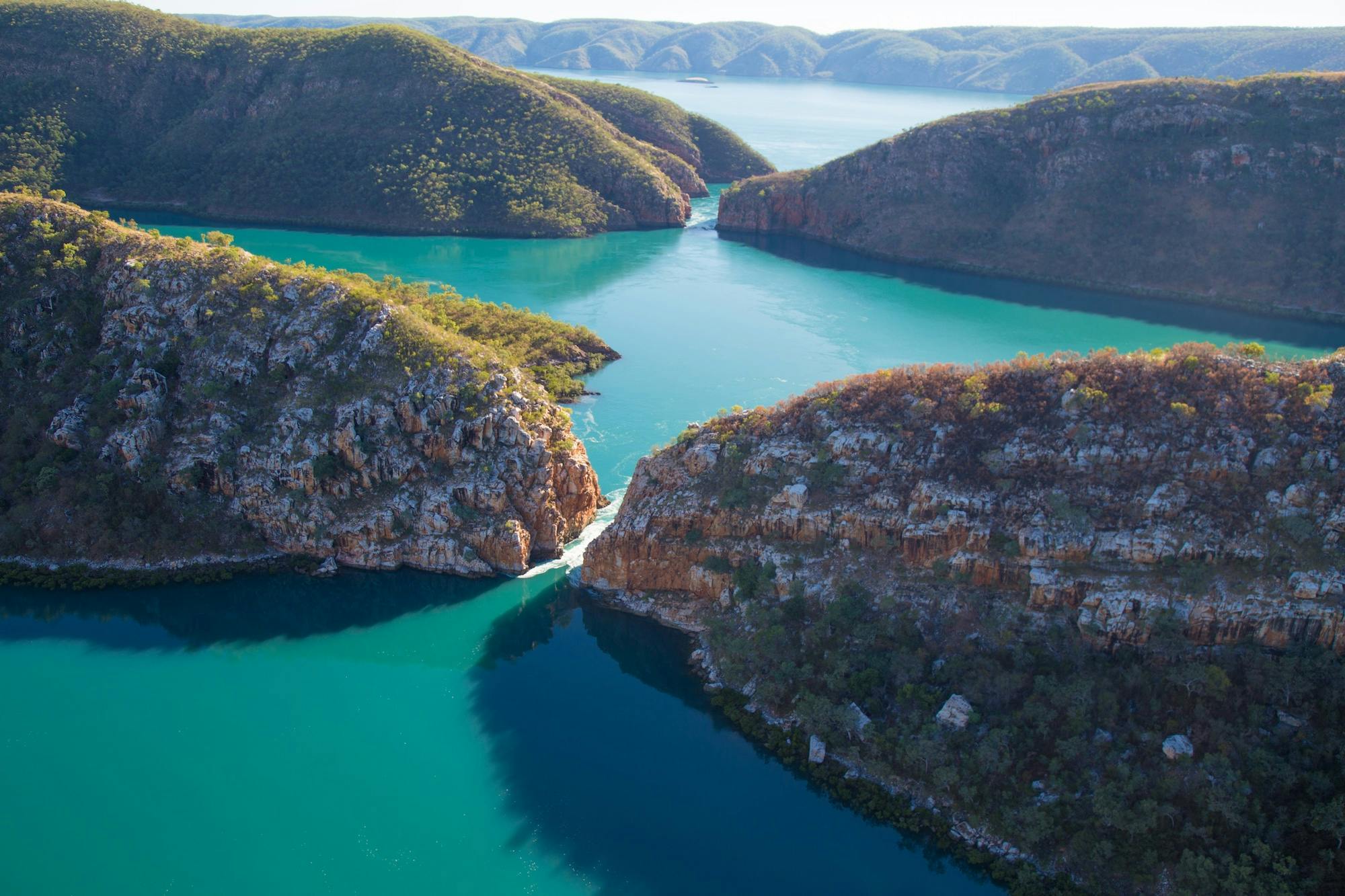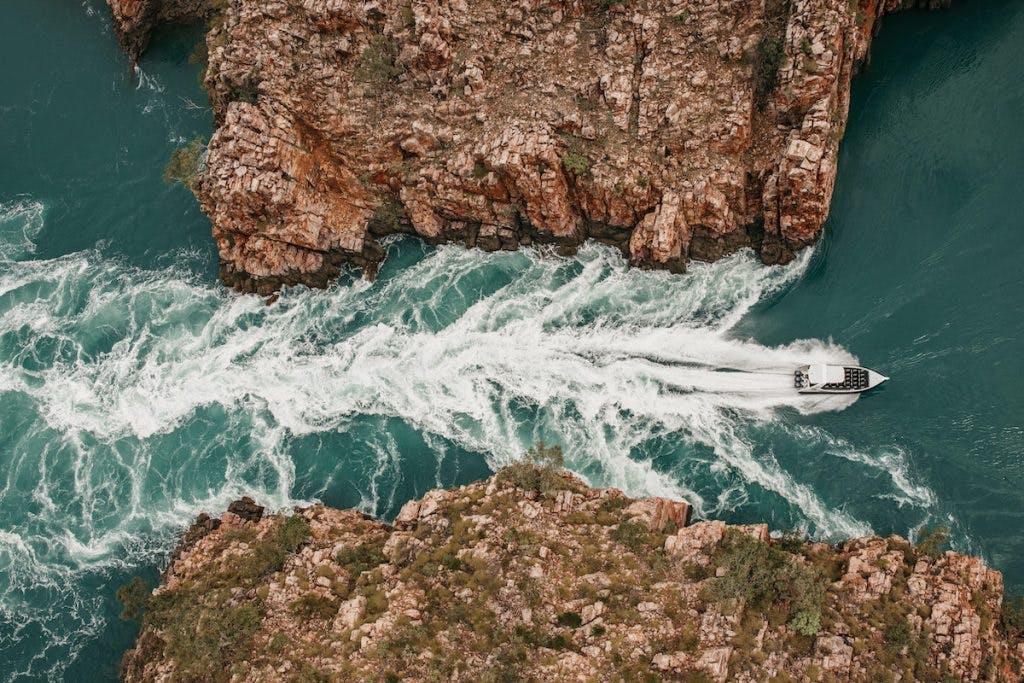Horizontal Falls: Everything you need to know

Also known as Garaanngaddim, Horizontal Falls are one of the Kimberley’s many spectacular natural attractions.
Experience the immense power and raw beauty of nature, Sir David Attenborough is one of its biggest fans!
What is it?
While Western Australia is filled with remarkable natural wonders, the Kimberley’s Horizontal Falls are truly one of a kind. The natural phenomenon is the result of mammoth tidal movements of up to 13 metres in height, rushing between two narrow gorges within the coastal McLarty Ranges. These ridges are 300 metres apart, but the seaward gorge is only 20 metres wide, and the landward gorge a minuscule 10 metres.
As the tides comes in, seawater can’t pass through the gorges quickly enough, leading to a waterfall-like torrent of water and sometimes a huge 4 metre difference in height between the two sides. This effect is exacerbated by the suction-like effect of the Montgomery Reef – 20 km offshore, it’s the largest inshore reef in the world and also host to dramatic tidal phenomena.
This spectacular display also reverses as the tide flows out – which makes sense, but still kind of blows our minds.
Where is it?
To see this phenomenon, you’ll need to travel to the Kimberley, specifically Talbot Bay in the Buccaneer Archipelago. On Dambimangari country, the closest town is Kimbolton, approximately 30km away – however, you won’t be able to just cruise on over in your Getz (or even a 4WD).
Subscribe to our free newsletter!
The site, part of the protected Lalang-garram/Horizontal Falls Marine Park, is only accessible via seaplane and then boat – so we recommend leaving it to the professionals and getting in touch with one of the many tour operators in the area.

What to do?
Once you’ve headed north to the Kimberley, there are a number of tour operators that can take you to the Horizontal Falls – which as we’ve said above, is basically the only way to see it up close. When booking, you should ensure that your tour operator has purchased Dambimangari country visitor passes – take a look at their Code of Conduct for visitors to make sure you’re helping to protect the pristine landscape and respecting the wishes of Traditional Owners.
What not to do:
As with all visits to our natural spaces, adhere to the Leave No Trace Principles: meaning don’t be a drongo and make sure you respect the environment. Not to be dramatic, but this is also some of the wildest, most untamed landscape in the world, with not just treacherous currents but estuarine crocodiles, sharks and box jellyfish – so make sure to listen to the experts and guides to make sure you come home in one piece.
–
Header image: Shutterstock